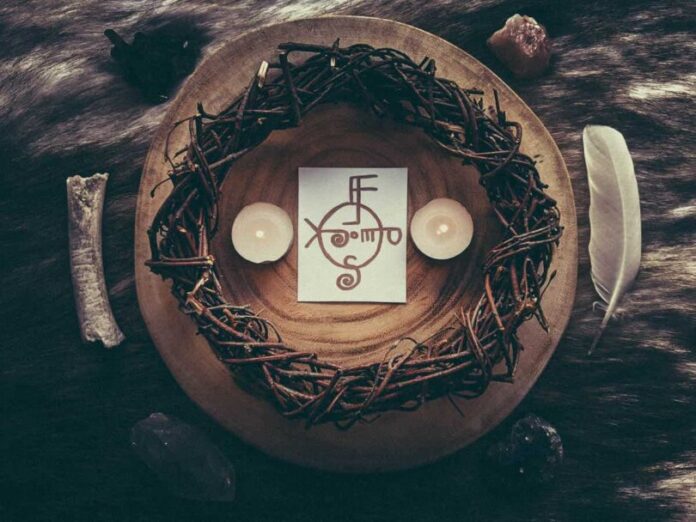Almost all magical traditions and spiritual schools of thought place high value on symbolism. In the world of magic and metaphysics, symbols have many different uses. They were a way for witches to hide their spell work and protect themselves from persecution, they served as a handy magical “shorthand” for inscribing candles and making amulets, and some symbols are believed to have a power of their own.
What Are Magic Symbols?
A magic symbol is a picture, shape, or design that is believed to have a special meaning or power in magic and spiritual practices. They can be used to represent a concept, idea, entity, or deity and can be used to add supernatural power to rituals or spells designed to bring about a desired outcome. Magic symbols can vary widely and can be found in many different ancient cultures and religious traditions.
Using symbols in magic is a way for someone to connect with potent spiritual and supernatural forces, channeling their power for a variety of rituals and spells. It is said that these symbols can help focus a practitioner’s intent and make their magic more effective. Some magical symbols are used to represent specific deities or spiritual entities, while others are more general in their meaning and can be used in a variety of contexts.
The Most Popular Magic Symbols
Here’s a list of the most popular magical symbols – in no particular order – practitioners can use to enhance their magical work and connect with the supernatural forces that can help to manifest positive change.
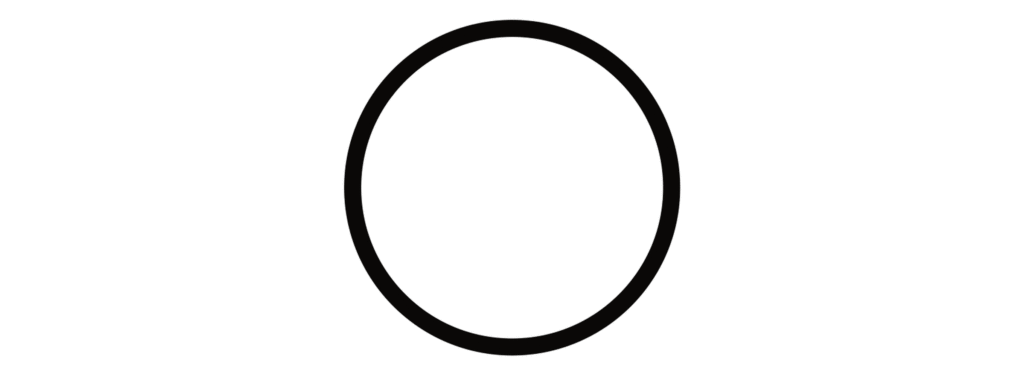
Circle of Protection
The circle is often seen as a symbol of unity, completeness, and wholeness, and is believed to help ward off negative energies and spiritual entities. The circle acts as a protective shield that surrounds and includes everything within its bounds, extending above and below.
Magical practitioners create circles of protection to confine magical energies and prevent negative influences from affecting their work. These circles are often marked with salt or cascarilla (chalk). Circles, in general, are also often seen in protective amulets.
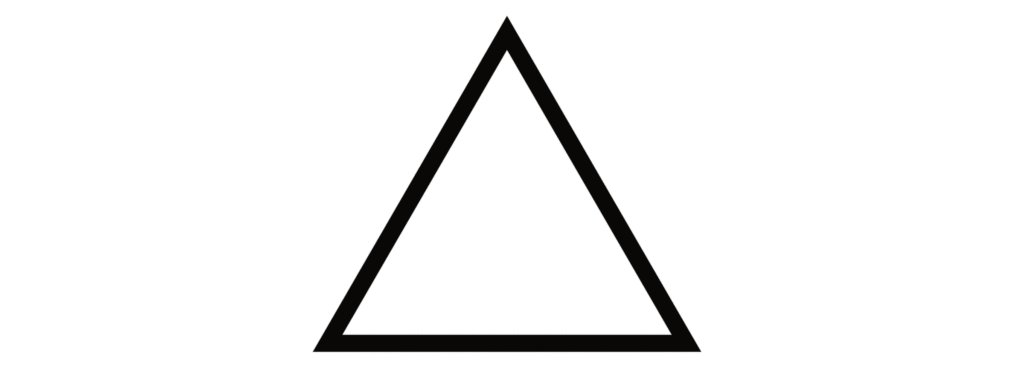
The Triangle
The triangle is a powerful magical symbol that has been used in various traditions and practices throughout history and is a prominent symbol in magical amulets. The three sides of the triangle represent the Triple Goddess in Wicca and Wicca-derived religions and the Holy Trinity in Christianity. It’s also the alchemical symbol for fire. As a fire symbol, stands for knowledge, illumination, and protection.
In ceremonial magic, the triangle is often used as a tool for evocation, which is the process of summoning a spiritual being or entity. The triangle is typically drawn on the floor or a table and is used to contain and control the energy of the entity that is being summoned. The points of the triangle may be inscribed with various symbols or words of power that are believed to enhance the effectiveness of the evocation.
In some traditions, the triangle is also used as a symbol of protection. The three points of the triangle are believed to represent the threefold nature of the divine, and the space within the triangle is considered a sacred space that is protected from negative energies or spiritual entities.
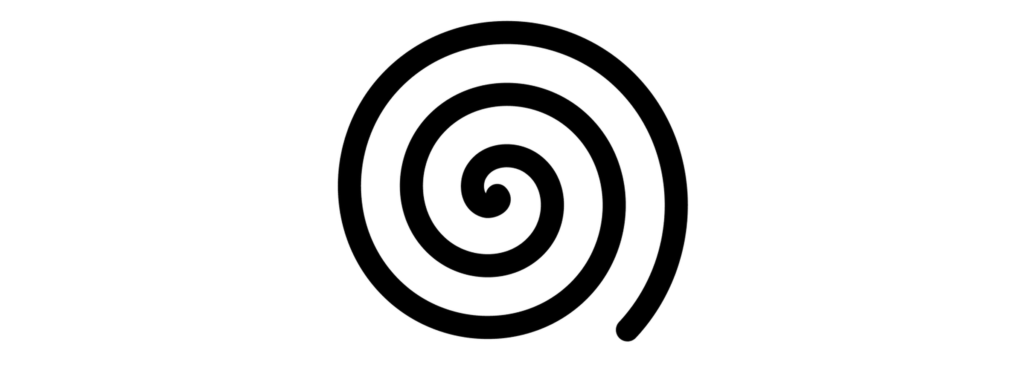
The Spiral
The spiral is a magical symbol that has been used for thousands of years by different cultures around the world. It represents the journey of life, growth, and evolution. The spiral is a shape that starts at a central point and moves outward, usually in a clockwise direction.
In ancient times, spirals were commonly found in many forms of artwork, such as carvings on stones, pottery, and even cave walls. The spiral symbolizes the cycle of life, and it is often used to represent the sun, the moon, and the seasons.
In magical practices, the spiral is used to connect the practitioner to the cycles of life and nature. It is believed to be a powerful symbol of transformation, helping individuals to let go of negative thoughts and emotions and embrace positive change. An Internal Change Amulet combines a pentacle, for protection, with a spiral for transformation.
The spiral is also used in meditation and visualization practices. Practitioners often focus on the spiral to calm their minds and connect with their inner selves. The spiral is believed to represent the journey to the center of oneself, where individuals can find their inner wisdom and connect with their higher selves.
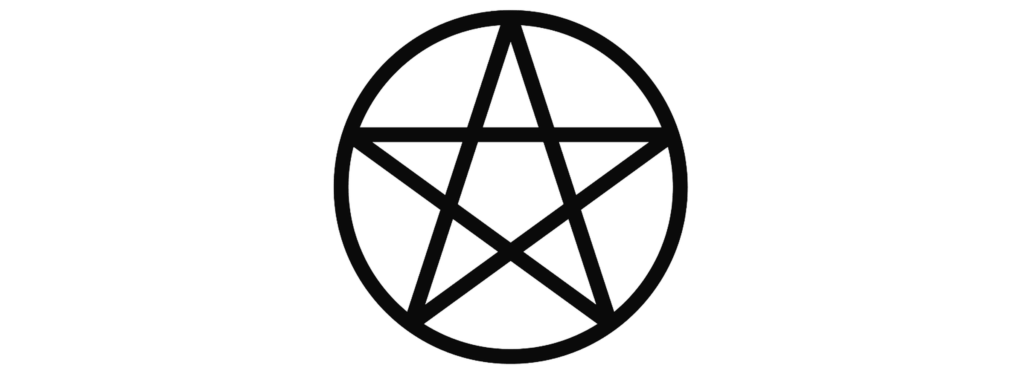
The Pentacle
The pentacle, sometimes also referred to as a pentagram, is a magical symbol that is often used in Wicca. A pentacle includes a five-pointed star, or pentagram, surrounded by a circle. Wiccans consider the pentacle to be a protective emblem, in addition to symbolizing their religion.
The terms pentacle and pentagram are often used interchangeably, but there is a difference between the two. A pentagram is a five-pointed star made up of a single unbroken line, while a pentacle is a pentagram that is surrounded by a circle.
The five points of the pentagram correspond to five elements, earth, air, fire, water, and spirit, all of which play a crucial role in Wiccan beliefs. The pentagram is also said to reflect the human body, with one point for each limb and the fifth for the head. The circle around the star represents infinity, the aura field, the totality of being, and the magical circle of protection.
Wiccans commonly use the pentacle in their rituals and ceremonies, as well as in the form of jewelry or decoration. The symbol is believed to provide spiritual energy and protection to the user.
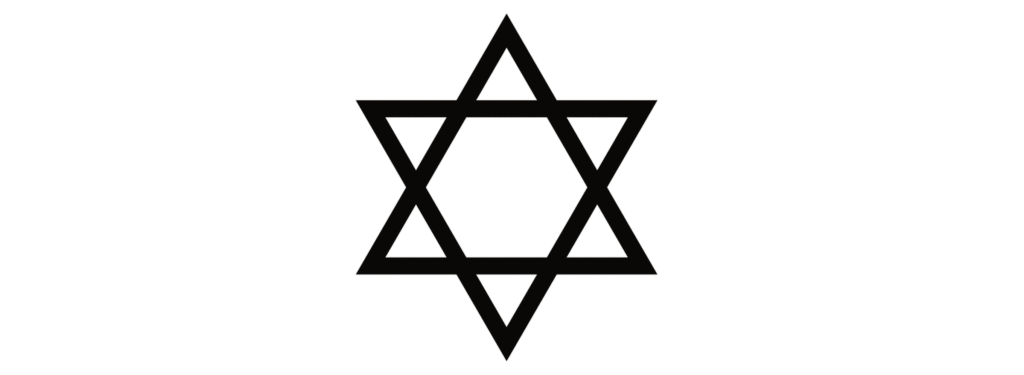
The Hexagram
The Hexagram is a six-pointed star that is commonly used as a magical symbol in various traditions. It’s sometimes called the Seal of Solomon or the Star of David. This symbol is believed to have protective and magical properties and is often used for talismans, amulets, and other magical objects.
The hexagram is made up of two interlocking triangles – one pointing upward and one pointing downward – that represent the union of opposites. The upward-pointing triangle represents the spiritual or divine aspect, while the downward-pointing triangle represents the physical or material aspect. Together, they represent the balance and harmony between these two aspects.
In Jewish and Christian traditions, the hexagram is associated with King Solomon, who was believed to have used the symbol to control demons and spirits. The hexagram is also associated with the planet Saturn and is used in planetary magic. It’s often used in spells and rituals for protection, healing, and banishing negative energy.
In some magical traditions, the hexagram is used as a symbol for invoking the power of the elements or the divine. The six points of the star represent the six classical elements – earth, air, fire, water, spirit, and “aether” – or the six directions – north, south, east, west, up, and down. The hexagram is also used in Kabbalah to represent the seven planets and the ten sephiroth.
The Hexagram is a powerful magical symbol that is used in a variety of ways. Its protective and balancing properties make it a popular choice for amulets and talismans, while its associations with planets and elements make it useful in various forms of ritual magic.
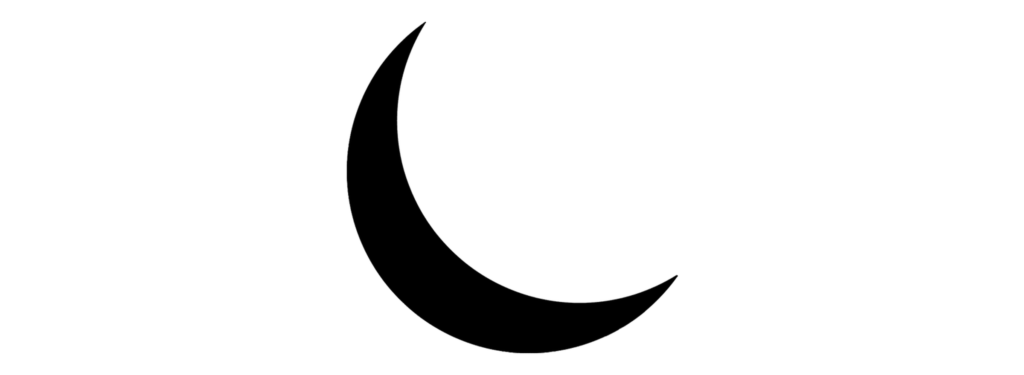
The Crescent Moon
The crescent moon is a symbol that has been used for thousands of years and holds great importance in many cultures around the world. It is often associated with the goddess and feminine power, as well as the cycles of nature.
The origins of the crescent moon symbol can be traced back to ancient civilizations such as the Sumerians, Babylonians, and Greeks. In these cultures, the crescent moon was often associated with lunar deities, such as the Sumerian goddess Nanna and the Greek goddess Artemis.
The crescent moon is also a symbol of change and transformation, as the moon goes through a cycle of phases from new to full and back again. This makes it a powerful symbol for those who are looking to bring about change in their lives or to embrace their inner power.
In some belief systems, the crescent moon is also associated with the element of water, which is seen as a feminine element that represents emotions, intuition, and creativity. The crescent moon is believed to help tap into these energies and unleash one’s full creative potential.
Overall, the crescent moon is a powerful symbol of the divine feminine, transformation, and creative energy. It is a reminder to embrace the cycles of life and to tap into the power of the natural world.
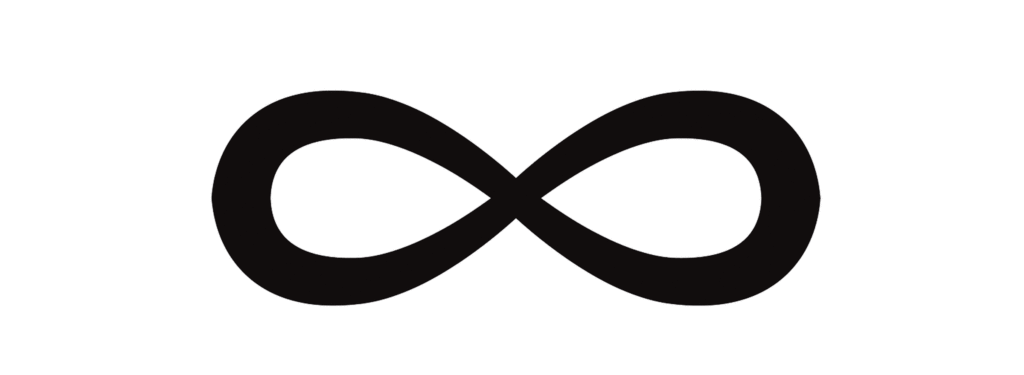
The Infinity Symbol
The infinity symbol is a popular and recognizable symbol that represents the concept of eternity and endlessness. It is often used in jewelry, tattoos, and artwork.
The origins of the infinity symbol can be traced back to the 17th century when mathematicians used the symbol to represent the concept of infinity, which is a mathematical concept used to describe something that has no end. The symbol was later adopted by philosophers and spiritualists to represent the infinite nature of the universe and the interconnectedness of all things.
The infinity symbol has also been used in various cultures and religions throughout history. In ancient Egypt, the symbol was used to represent the concept of eternal life and was often depicted in association with the god Osiris, who was the god of the afterlife. In Hinduism, the infinity symbol is known as the “Om” symbol, which represents the sound of the universe and the connection between all things.
In modern times, the infinity symbol has become popular as a symbol of love and friendship, as it represents the idea that love and friendship are never-ending and infinite. It is often used in jewelry and artwork to express the idea of eternal love and the unbreakable bond between friends.
In terms of magical powers, the infinity symbol is believed to have the power to bring balance and harmony to one’s life. It is said to help people connect with their inner selves and find their purpose in life. The symbol is also believed to have the power to attract abundance and prosperity, as it represents the idea of endless abundance and wealth. Additionally, it is said to promote healing and inner peace, as it represents the idea of wholeness and balance.

Eihwaz
Eihwaz, also known as the Yew tree, is a letter in the Norse runic alphabet used for magic and spirituality. All runes are regarded as more than just a writing system and are believed to have their own metaphysical attributes, divinatory meanings, and magical associations. Eihwaz is often associated with the attributes of transformation, change, and renewal.
In magical practice, Eihwaz can be used to enhance personal power, overcome obstacles, and bring about a sense of balance and stability. Eihwaz can be inscribed on objects, such as candles or talismans, to instill its properties or used in meditation and visualization to focus intentions.
Eihwaz is also associated with the Norse god Odin, who hung on the World Tree, Yggdrasil, for nine days and nights to gain knowledge and wisdom. As such, Eihwaz is considered a symbol of sacrifice and self-discovery. It can be used in rituals and ceremonies honoring Odin, as well as in personal spiritual practices aimed at self-improvement and transformation. It is also used as a companion symbol in this amulet to confuse and defeat enemies.

The Ankh
The Ankh is a powerful magical symbol from ancient Egypt. It is a symbol of eternal life and immortality and was used in many religious ceremonies and rituals.
The Ankh is often seen in the hands of ancient Egyptian gods and goddesses and was believed to be a source of their power. It is shaped like a cross with a loop at the top and is said to represent the union of male and female energies, as well as the balance between life and death.
The origins of the ankh are not entirely clear, but it is thought to have been in use since at least 2500 BCE. It was often used in art and architecture and was even worn as an amulet or pendant for protection.
The ankh was believed to have many magical powers. It was said to bring good luck, fertility, and protection from harm. It was also believed to be a source of healing energy and was used in many healing rituals.
Today, the ankh is still a popular symbol in modern culture. It is often used in jewelry and clothing and is sometimes used in modern pagan and Wiccan rituals. The Ankh is a powerful symbol of life, vitality, and the eternal cycle of birth, death, and rebirth.
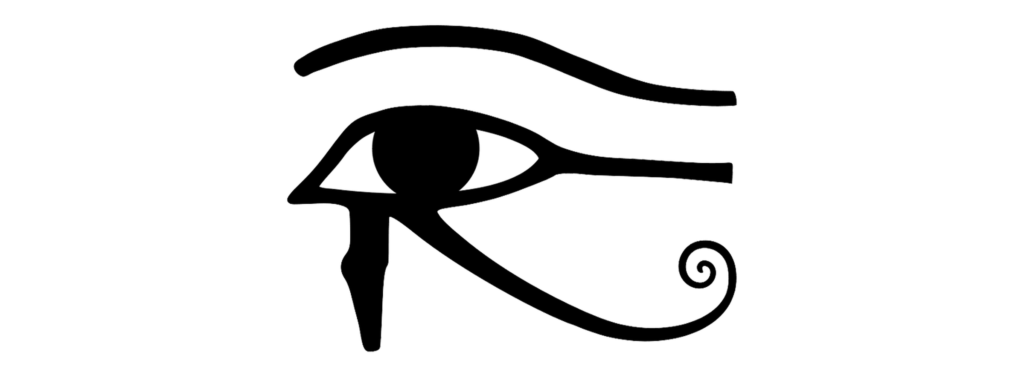
The Eye of Horus
The Eye of Horus is a magical symbol from ancient Egypt that has been used for centuries. This symbol can be found in many different forms of artwork, as well as in amulets worn for protection. It is believed that the Eye of Horus has the power to protect anything that it looks upon.
Sometimes, people may confuse the Eye of Horus with the Eye of Ra, but they are two different symbols with different meanings. The Eye of Horus is closely tied to the legend of Horus, who was a powerful god of the sky and was associated with rebirth. According to the legend, during a battle with Set, Horus’ left eye was injured, but it was eventually healed by Thoth, the god of knowledge and wisdom. The Eye of Horus, therefore, represents healing, rejuvenation, and protection.
The Eye of Ra, on the other hand, comes from the legend of Ra, who was the sun god and creator of the universe. In the story, Ra removed his eye and sent it to light the primordial darkness, a symbolic act of creation. However, when Ra’s eye was regrown, it became jealous of the new eye and wanted to be restored to its rightful place. To appease the eye, Ra placed it on his forehead as a sign of illumination. The Eye of Ra, therefore, represents fiery protection, knowledge, and light in the darkness.
While the Eye of Horus and the Eye of Ra may look similar, they have different origins and meanings. The Eye of Horus is a symbol of healing, rejuvenation, and protection, while the Eye of Ra represents fiery protection, knowledge, and light in the darkness. Both symbols have been used for centuries and are still considered powerful and meaningful today.
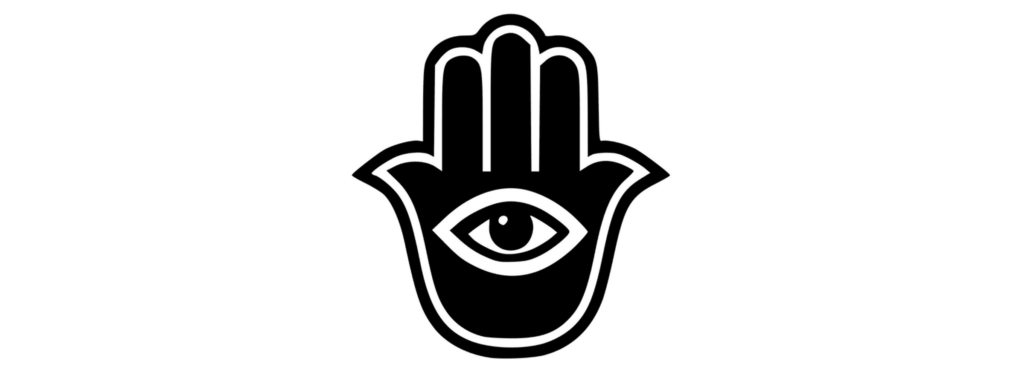
The Hamsa
The Hamsa, also known as the Hand of Fatima or Hand of Miriam, is a magical symbol that has been used for centuries in various cultures and religions, including Islam, Judaism, and Christianity. It is a hand-shaped symbol with an eye in the center and is often worn as jewelry or hung on walls as a protective amulet.
The Hamsa is believed to protect against the evil eye, which is a curse that can be cast by a malevolent gaze. The eye in the center of the Hamsa is thought to provide protection and ward off any negative energy or spirits. In addition to its protective qualities, the hamsa is also used as a symbol of luck, happiness, and prosperity.
The Hamsa has several interpretations and meanings across different cultures and traditions. In Islamic culture, it is associated with the Five Pillars of Islam, while in Jewish tradition, it is associated with the Five Books of Moses. Some also believe that the five fingers of the Hamsa correspond to the five elements of nature.
The Hamsa can be used in various ways for magical purposes, such as inscribing it on candles or amulets or incorporating it into spells and rituals. It is often used in meditation and prayer to promote peace, tranquility, and protection. In some practices, the Hamsa is also used as a symbol of unity and interfaith cooperation, representing the shared beliefs and values across different cultures and religions.

The Evil Eye
The evil eye is a popular magical symbol that has been used in many cultures to ward off evil spirits and protect the wearer from harm. It is typically represented as a blue or green eye-shaped amulet, although it can also be found in other colors and designs.
The belief in the evil eye goes back thousands of years and is still prevalent in many parts of the world today. The idea is that some people possess the power to cause harm to others simply by looking at them with envy or jealousy. The evil eye symbol is believed to protect against this harmful energy by reflecting it back to the sender.
The evil eye symbol is often used in jewelry and home decor, such as wall hangings and keychains. It is also sometimes worn as a pendant or bracelet to protect the wearer from negative energies. In addition, it can be found in various forms, such as ceramic or glass eye-shaped talismans, and can be used in many different rituals and ceremonies.
In some cultures, the evil eye symbol is also used in combination with other protective symbols, such as the Hamsa or the pentagram, to amplify its power. The evil eye is an essential part of many magical traditions and is believed to have the power to protect and provide spiritual energy to the user.
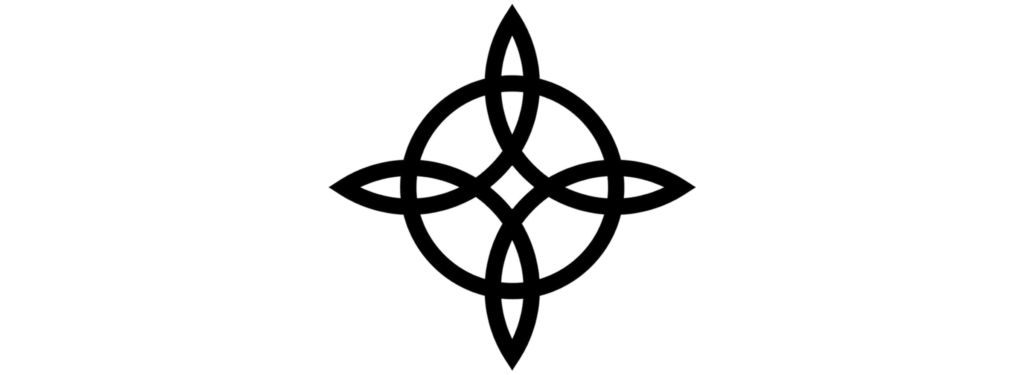
The Triquetra
The Triquetra is a magical symbol that has been used for thousands of years by different cultures around the world. Its origins can be traced back to ancient Celtic artwork, where it was used as a symbol of the Holy Trinity.
The word “triquetra” comes from Latin and means “three-cornered.” The symbol is made up of three interlocking circles, each with a triangular knot. The three corners represent the three aspects of the Holy Trinity – the Father, the Son, and the Holy Spirit. This symbol was often used in Christian artwork and manuscripts to represent this belief.
In pagan beliefs, the triquetra is associated with the three natural elements – earth, air, and water. It is also believed to symbolize the three phases of the moon – waxing, full, and waning.
The Triquetra is often used as a protective symbol, believed to ward off evil and bring good luck. Some people wear jewelry with the triquetra symbol to keep them safe and protected. Others use it in spells and rituals to increase their magical power.
In addition to its protective powers, the triquetra is also associated with balance and unity. The three interlocking circles represent the interconnectedness of all things and the importance of finding harmony in life.
Overall, the triquetra is a powerful and ancient symbol that has been used by different cultures for centuries. It’s for its believed powers of protection, balance, and unity that make it a popular and meaningful magical symbol to this day.
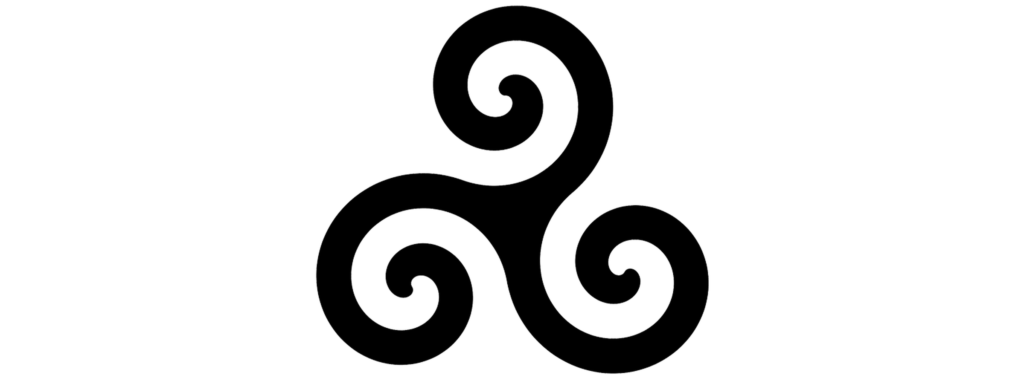
The Triskele (Triple Spiral)
The Triskele, or Triple Spiral, is an ancient symbol rooted deeply in Celtic and pre-Celtic traditions, dating back to the Neolithic era. The symbol consists of three spirals interlocked, representing various triplicities significant to the Celts, such as life, death, and rebirth, or land, sea, and sky.
This timeless symbol is believed to embody the continuous flow of life and the cycles of nature, reflecting themes of eternal spiritual growth and the interconnectedness of all things. The Triskele can be found at ancient sites such as the Newgrange Passage Tomb in Ireland, highlighting its historical importance and widespread use in Celtic culture.
In Celtic spirituality, the Triskele is seen as a representation of the Triple Goddess, encompassing the phases of maiden, mother, and crone, each phase symbolizing different stages of life and aspects of feminine power. The symbol also extends to the Christian era, where it was adopted to represent the Holy Trinity of Father, Son, and Holy Spirit. This versatility allows the Triskele to convey various meanings across different contexts, including personal growth, the movement of time, and the balance of elemental forces.
In modern times, the Triskele continues to be a popular motif in art, jewelry, and spiritual practices. It is used in meditative rituals to invoke harmony and balance, reflecting its ancient symbolism of unity and perpetual motion. Additionally, the Triskele is featured in contemporary designs and emblems, signifying a connection to ancient traditions and the ongoing journey of the spirit.
Its enduring presence in popular culture and its representation in various forms, from tattoos to architectural elements, underscore its lasting significance and the fascination it holds as a powerful symbol of continuity and interconnectedness.
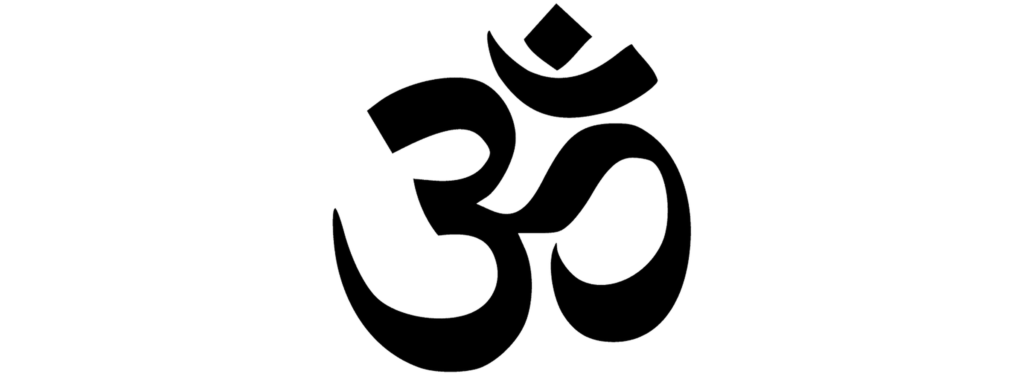
The Om
The Om symbol, also known as Aum, is a sacred sound and a spiritual icon deeply revered in Hinduism, Buddhism, and Jainism. This primordial sound is believed to be the source from which the universe was created. Om is composed of three sounds: A-U-M, each representing different states of consciousness. ‘A’ stands for the waking state, ‘U’ for the dreaming state, and ‘M’ for the deep sleep state. Together, they encompass the entire spectrum of human consciousness. Additionally, the silence that follows the chant of Om symbolizes the fourth state, Turiya, which transcends these three to represent the ultimate state of consciousness and bliss.
In Hinduism, Om is considered the most sacred syllable and is often the first sound chanted at the beginning and end of prayers, mantras, and meditative practices. It signifies the essence of the ultimate reality, consciousness, or Atman (soul). In Buddhism, Om is part of the mantra “Om Mani Padme Hum,” which is chanted to invoke compassion and benevolence. In Jainism, Om is used to represent the five supreme beings and the universe’s eternal sound.
In contemporary times, Om has transcended its religious origins to become a universal symbol of spirituality and inner peace. It is extensively used in yoga practices worldwide, symbolizing the connection between the physical and the spiritual realms.
Chanting Om during meditation is believed to help align the practitioner with the cosmic energy, bringing about a sense of tranquility and unity with the universe. The symbol is also a popular motif in spiritual jewelry and art, serving as a reminder of one’s spiritual journey and the interconnectedness of all existence.
The Om symbol’s visual representation also holds significant meaning. The three curves signify the three states of consciousness, the semicircle represents Maya (illusion), and the dot at the top signifies the ultimate state of consciousness. This intricate design underscores the profound spiritual depth embodied in this ancient symbol.

The Horned God
The Horned God is a significant deity in Wiccan and pagan traditions, embodying the male aspect of divinity, nature, and the cyclical flow of life. Often depicted with antlers or horns, the Horned God symbolizes the primal, untamed forces of nature, fertility, and the wilderness. He is the counterpart to the Triple Goddess, representing the balance between masculine and feminine energies. This duality is essential in Wiccan belief systems, where both aspects are honored to maintain equilibrium within the natural world.
The Horned God is revered as the embodiment of wildness, instinct, and the generative powers of the earth. His horns, akin to those of a stag, connect him to animals and the hunt, reflecting his role as the guardian of the forest and the protector of wildlife.
The deity’s association with the natural world extends to agricultural cycles, symbolizing the death and rebirth of crops and the continuous renewal of life. This aspect of the Horned God is celebrated during Sabbats such as Beltane and Samhain, which mark significant points in the Wiccan Wheel of the Year.
In modern pagan practices, the Horned God is invoked in rituals that aim to connect practitioners with the natural cycles of the earth, celebrate fertility, and honor the wild, untamed aspects of spirituality. These rituals often involve offerings to nature, dance, and music to invoke the energy of the Horned God and align oneself with the rhythms of the natural world.
The Horned God serves as a powerful reminder of humanity’s deep connection to nature and the importance of balancing life’s cycles, fostering a sense of reverence for the environment and the life forces that sustain it.
Today, the symbol of the Horned God can be found in various forms of modern pagan art, literature, and spiritual practices. It continues to inspire those who seek to cultivate a deeper connection with nature, embrace their wild instincts, and celebrate the sacredness of life’s cyclical patterns.
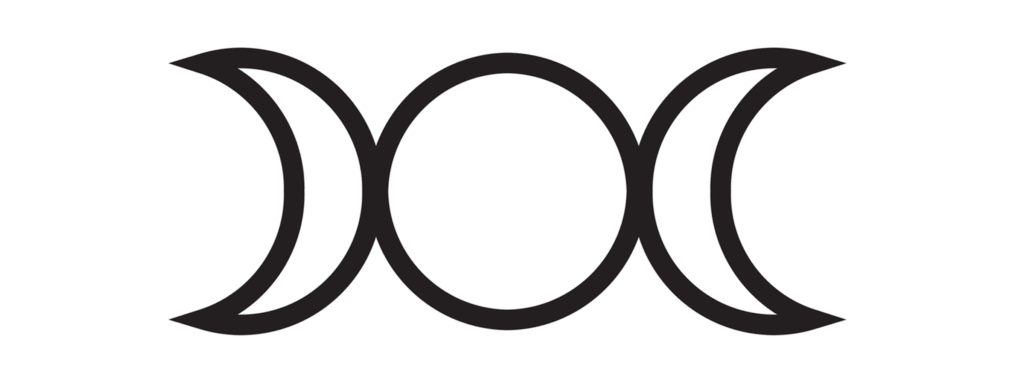
The Triple Moon (Triple Goddess)
The Triple Moon symbol represents the three phases of the moon: waxing, full, and waning. These phases correspond to the Maiden, Mother, and Crone aspects of the Triple Goddess in Wiccan and Neopagan traditions.
The Maiden signifies new beginnings, youth, and enthusiasm; the Mother represents fertility, nurturing, and maturity; and the Crone symbolizes wisdom, rest, and endings. This symbol highlights the cyclical nature of life, the phases of womanhood, and the divine feminine power.
In contemporary spiritual practices, the Triple Moon is used in rituals, meditations, and altars to invoke the Goddess’s protection, guidance, and wisdom. It serves as a powerful symbol in celebrating the sacred feminine and is often found in jewelry and artwork, embodying feminine strength, intuition, and the interconnected cycles of life.
The Triple Moon also reminds practitioners of the continual ebb and flow of life and the importance of embracing each phase with grace and reverence.

The Witch’s Knot
The Witch’s Knot, also known as the Magic Knot or Witch’s Charm, is a symbol of protection and warding off evil. This intricate design, composed of intertwined lines creating a complex, unbroken loop, is believed to trap negative energies and prevent them from causing harm.
Historically, the Witch’s Knot has roots in various cultures and is closely tied to ancient symbols of the Mother Goddess, representing the power of creation and the cycle of life, death, and rebirth.
Today, the Witch’s Knot is frequently used in protective charms, amulets, and home decor to safeguard against negative influences. It is crafted in various forms, such as embroidered designs or carved objects, to harness its protective energy.
The symbol serves as a powerful reminder of the interconnectedness of all things and the strength found in unity and resilience. In spellwork and rituals, the Witch’s Knot amplifies magical intentions, reinforcing the practitioner’s power and the protective forces at play.
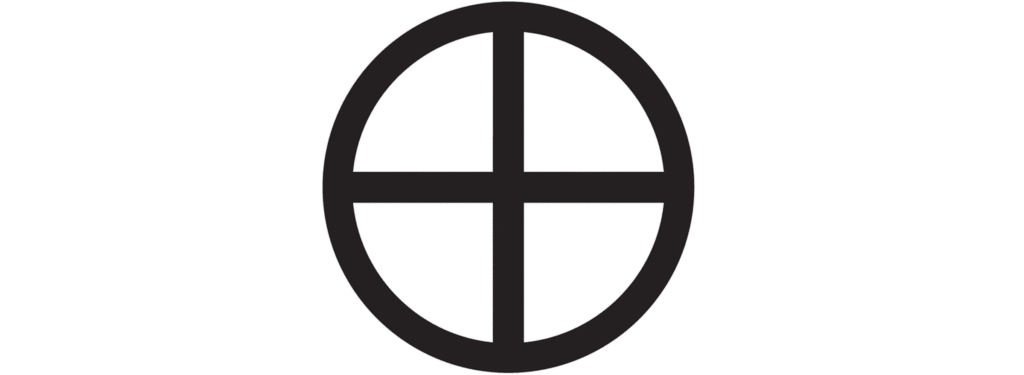
The Solar Cross
The Solar Cross, also known as the Sun Cross or Wheel Cross, is one of the oldest and most universal symbols, appearing in various cultures worldwide. This symbol consists of a cross within a circle, representing the sun and the wheel of the year. It embodies the cyclical nature of time, illustrating the passage of the four seasons, the cardinal directions (north, south, east, west), and the solar cycle. The Solar Cross is a powerful representation of the sun’s role in sustaining life and marking the rhythm of existence on Earth.
In modern spiritual practices, the Solar Cross is used to honor the sun’s power and its influence on life. It is often invoked during rituals that mark seasonal changes, such as solstices and equinoxes, celebrating the natural cycles and the rhythm of life. The symbol is also a reminder of balance and unity, reflecting the interconnectedness of all life on Earth.
Its use extends to various forms of art, jewelry, and religious iconography, symbolizing harmony and the perpetual cycle of growth, death, and rebirth. The Solar Cross continues to inspire those who seek to connect with the natural world and the ancient rhythms that govern it, serving as a timeless emblem of life’s enduring cycle.
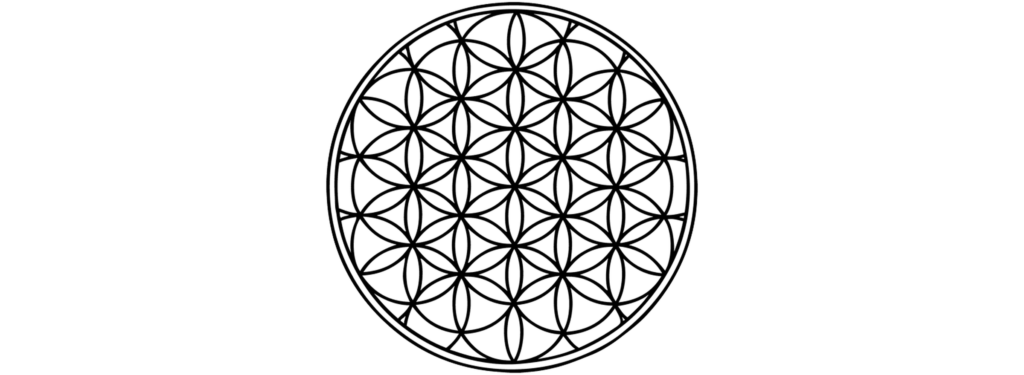
The Flower of Life
The Flower of Life is a geometric symbol composed of multiple evenly-spaced, overlapping circles arranged in a flower-like pattern. It is considered a symbol of creation and the interconnectedness of all life. This intricate design is believed to contain the blueprint of the universe, embodying the fundamental forms of space and time.
Each circle in the Flower of Life is thought to represent a different aspect of existence, contributing to the whole, which illustrates the interconnectedness and unity of all life.
In various spiritual and mystical traditions, the Flower of Life holds significant meaning. It is often seen as a visual representation of the cycle of creation, illustrating how all life and consciousness emerge from a single source.
The symbol is also connected to sacred geometry, a belief that certain geometric patterns and shapes have spiritual significance and reflect the fundamental structures of the universe.
In modern spiritual practices, the Flower of Life is used for meditation, healing, and as a tool for spiritual awakening. Practitioners believe that focusing on the symbol can help align their energies, promote healing, and facilitate a deeper connection to the universal life force.
The Flower of Life is also a popular design in art, jewelry, and architecture, where it represents harmony, balance, and the infinite possibilities of creation. Its presence in various forms of creative expression underscores its role as a symbol of the unity and interconnectedness of all things, inspiring those who seek to understand the deeper patterns of existence.
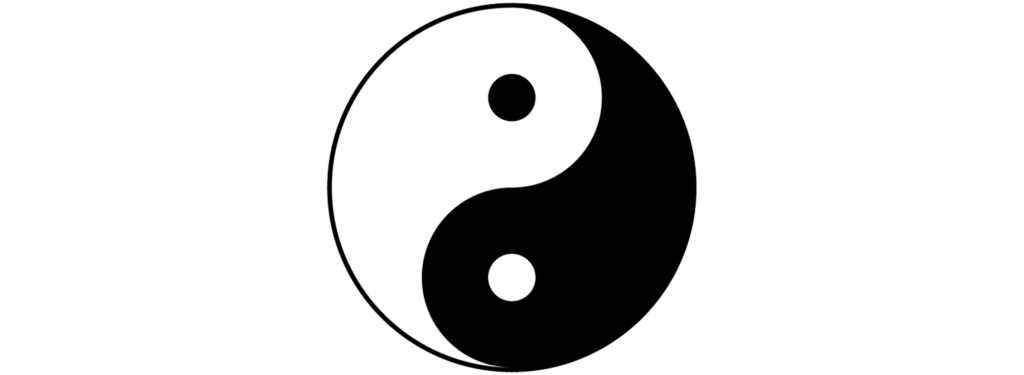
Yin Yang
The Yin Yang symbol, originating from Chinese philosophy, represents the duality and balance of opposing forces in the universe. The symbol features a circle divided into a black half (yin) and a white half (yang), with a dot of the opposite color within each half.
Yin embodies the feminine, passive, and dark aspects of existence, while yang represents the masculine, active, and light aspects. Together, they illustrate the interdependence of opposites and the idea that everything in the universe is interconnected and constantly changing.
In Chinese philosophy, yin and yang are not seen as opposing forces but rather as complementary ones that interact to form a dynamic system in which the whole is greater than the assembled parts. This interaction is evident in various aspects of life, from the natural world to human behavior and societal norms. The concept emphasizes that within every entity, there is both yin and yang, and balance is achieved when these forces are in harmony.
In modern use, the Yin Yang symbol serves as a reminder to seek balance and harmony in all aspects of life. It is prevalent in practices such as Tai Chi, Qigong, and various forms of meditation, where it symbolizes the pursuit of inner peace and equilibrium.
These practices aim to balance the body’s energy, promoting physical and mental well-being. The symbol’s influence extends to health and lifestyle choices, encouraging a balanced approach to diet, work, relationships, and emotional health.
The Yin Yang symbol’s philosophical underpinning also informs various aspects of traditional Chinese medicine, martial arts, and even feng shui, where it is used to create harmonious living environments. By understanding and applying the principles of yin and yang, individuals can strive for a balanced, harmonious life, reflecting the interconnectedness and fluid nature of the universe.
Who Uses Magical Symbols?
These symbols hold universal appeal, drawing interest from individuals across various cultural and spiritual backgrounds. They are often incorporated into daily life through jewelry, tattoos, home decor, and personal rituals, offering a sense of protection, spiritual connection, and empowerment. People seeking spiritual growth, protection, and a deeper connection to the universe find these symbols particularly appealing. They are used by:
-
Spiritual Practitioners: Individuals who practice Wicca, Paganism, and other earth-based religions frequently use these symbols in their rituals and daily practices.
-
Meditation and Yoga Enthusiasts: Symbols like Om are integral to practices aimed at achieving inner peace and spiritual enlightenment.
-
Cultural Enthusiasts: People interested in ancient cultures and their wisdom often incorporate these symbols into their lives as a way to honor and connect with the past.
-
Modern Mystics: Those who blend various spiritual practices into a unique, personalized approach often use these symbols to enhance their spiritual toolkit.
Using Magical Symbols in Your Ritual Practice
Incorporating magical symbols into daily life can be a meaningful and empowering practice. Here are some ways to use these symbols:
-
Jewelry and Amulets: Wearing symbols on necklaces, rings, or bracelets can provide constant protection and spiritual alignment.
-
Home Decor: Placing symbols in your home, such as the Eye of Horus for protection or the Triskelion for personal growth, can create a spiritually charged environment.
-
Tattoos: Many people choose to permanently mark their bodies with symbols that resonate deeply with their spiritual journey.
-
Rituals and Ceremonies: Using symbols in rituals can enhance the intention and power of the practice. For example, drawing a pentagram during a protection ritual or chanting Om during meditation.
-
Personal Altars: Creating a personal altar with various symbols can serve as a focal point for daily spiritual practice and meditation.
Magical symbols carry a rich tapestry of meanings and historical significance that continue to influence and inspire people around the world. Whether used for protection, healing, or spiritual growth, these symbols offer a powerful connection to ancient wisdom and universal energies. By understanding and incorporating these symbols into everyday life, individuals can tap into their profound power and enhance their spiritual journey.


